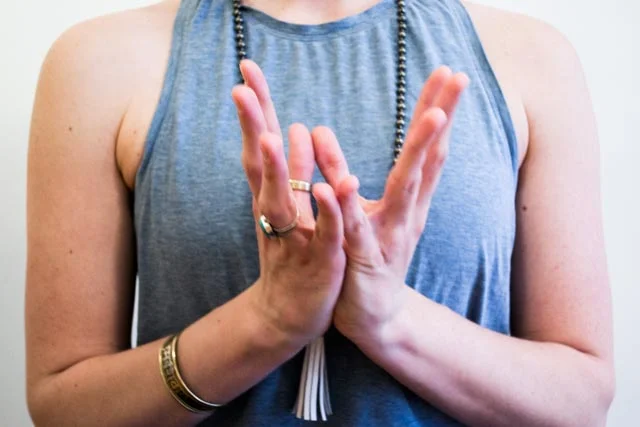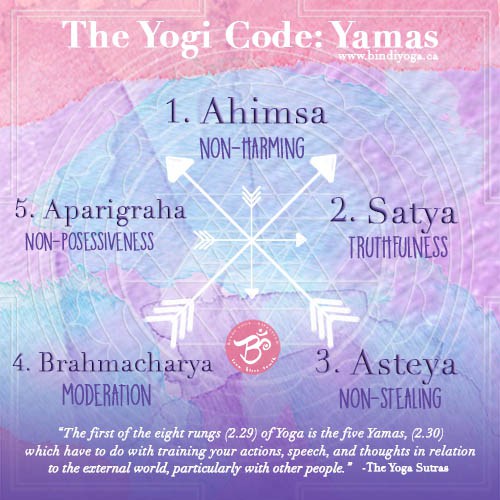Padma (Lotus) Mudra. Photo by Joelle Ng.
If you’ve been in a yoga class or teacher training and hear about the guiding philosophies that go beyond just the physical practice (Asana), then it’s probably in reference to the Yamas or the Niyamas. These principles were written thousands of years ago and once considered mandatory vows for any yoga practitioner.
They can be difficult for the modern practitioner to embrace in a secular, contemporary society. In the same vein, yoga was developed for adolescent boys to teach them to sit still with discipline and to strengthen their bodies for the arduous work ahead of them. Now, more than half your average yoga class is practiced by women and even more classes are created for women, like pre- and post-natal yoga.
My suggestion, as I review just a couple of the meanings from the 1st Limb of Ashtanga Yoga - The Yamas - would be to consider these “rules” less as directives and more as reflective tools that allow us to deepen our self-awareness in yoga class and beyond. These practices can have deep and long lasting effects, whereas the physical practice only takes you so far on the path.
For example, violence isn’t just firing a weapon; it may also arise in the harsh ways we treat ourselves (like pushing too hard in class to keep up with or compete with classmates). Or, non-possessiveness could be interpreted as letting go of old grudges.
The first of The Yamas is Ahimsa, which means Non-Harming.
Rather than trying to explain, my teaching style is to bring it into the senses immediately - to feel - starting with the physical body in the Asana practice.
Pose: Virabhadrasana I (Warrior Pose I)
Mudra: Padma (Lotus) Mudra
Mantra: Lokah samastah sukhino bhavantu (“May beings in all reals experience the feeling state of ease”)
From standing, step the right leg back towards the right edge of the mat, spiraling the right heel down so the foot is grounded
Bend the left knee and guide the right hip toward the left big toe
Bring hands together at the heart with fingers apart, in the gesture of Padma (lotus) Mudra
Drawing inspiration from the purity and perseverance of the lotus flower floating above the muddy waters of desire, fear and attachment - the feelings that cause us to lash out at others or ourselves
Meditate on the namesake of the pose: Vira means “hero” or “warrior” and bhadra means “with great virtue”
Apply concept of non-harming with fortitude and grace of a warrior
Attune warrior energy toward the virtues and peace and non-harming of yourself, others and the environment
Chant: Lokah samastah sukhino bhavantu (“May beings experience the feeling state of ease”)
Virabhadrasana I (Warrior Pose I). Photo by Annaliese Godderz.


